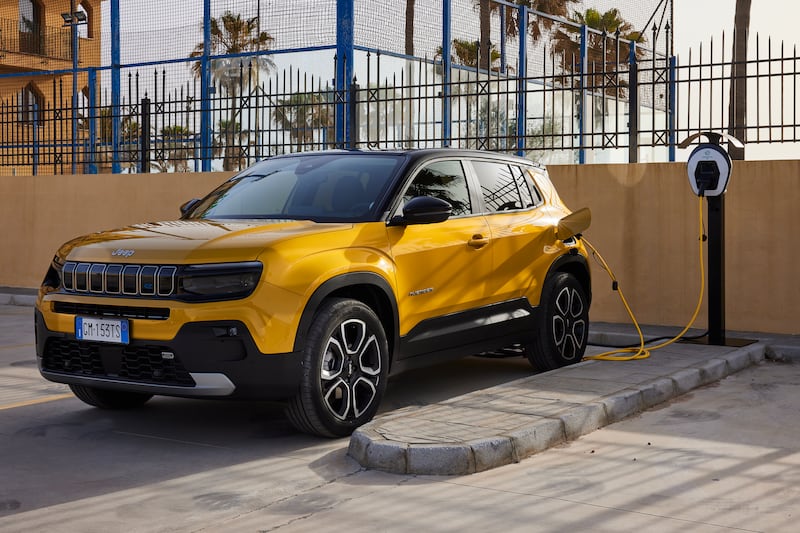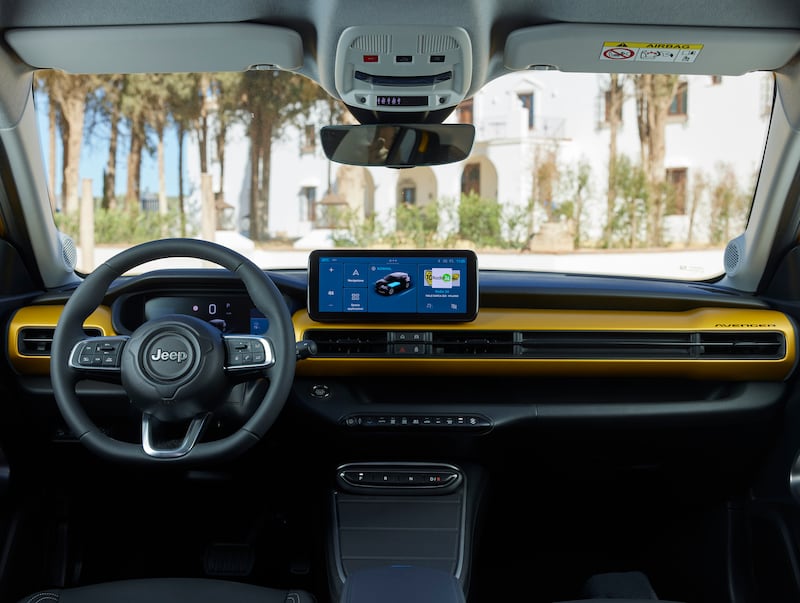Maybe this will bring it to an end. The subeditor in me cannot abide the use of specific brand names as generic terms. It’s not a Hoover, it’s a vacuum cleaner, unless it actually is branded as a Hoover. To claim otherwise makes my teeth itch. Ditto Band-Aid, Q-tip and Frisbee. These are actually all individual brands, not a general term to be bandied about.
Jeep is the one that really gets me. Jeep, in an Irish context, is used so generically that it has become an official designation for a segment of the market according to Revenue, gardaí and even the industry lobby organisation SIMI. Which is just plain wrong.
Jeep is a brand, and a very specific one. One that began in 1941, with the specification for the US army truck, quarter-ton, 4×4, command reconnaissance vehicle. It was a specification so hard to meet that eventually the work of three companies – Bantam, Willys and Ford – had to be amalgamated to create the best possible solution. A solution that would go on to become, according to no less an authority than Gen Dwight David Eisenhower, a war winner and a crucial contributor to the eventual defeat of European fascism. How much we could do with that kind of go-get-em spirit today…
Speaking of today, in an Irish context Jeep is nowhere. In spite of the current craze for all things SUV and 4x4, the great American brand (never mind that it has, variously over the years, been owned by French, German and Italian overlords and is today part of the sprawling Stellantis car-making conglomerate) has just never chimed with Irish buyers. A combination of products that never quite suited the market, and a small – and often shrinking – dealer lineup has held it back, even as Jeep, globally speaking, has grown to colossus size.
Bashed tables, dad dancing and pizza: how the deal for a new government was done
Your January garden doesn’t care about your new year’s resolutions
Cameron Diaz: ‘I left movies because I wanted to live my life differently. We started our family, and that was all I wanted to do’
Author Jon Ransom: ‘My mother was remarkable. She gave me a passion to tell stories’

That could be about to change. The new Jeep Avenger, at just 4.08m long, is the smallest Jeep-branded product since the original Willys MB that won the war (which was just 3.36m long, in case you’re wondering). It looks and feels like the right product at the right time – compact, chunky and appealing in its style, and powered only by electricity. If this Jeep doesn’t strike the Irish zeitgeist, then maybe nothing will.
It certainly seems to be working across Europe. Already a holder of the 2023 European Car Of The Year award, the Avenger has racked up something between 22,000 and 40,000 orders already, depending on exactly who you’re listening to. So it’s already a success. In spite of its all-American styling – the classic seven-bar grille, the way the front wheel arch leads back into the rear – it’s actually entirely a European product, and will be built in the Tychy factory in Poland, which used to build the Fiat 500 and, further back, the communist-era Fiat Polonez models. For a car that bills itself (really) as providing ‘concentrated freedom’ there’s either a major irony in that, or none at all. Take your pick.
There is certainly freedom from hydrocarbons. Although some markets will get a petrol-powered Avenger, Ireland will get only electric versions. It’s based on the same e-CMP2 platform that underpins the likes of the Peugeot e-2008 and Opel Mokka-e, but which has been updated to carry a new 54kWh battery pack and a 156hp electric motor, driving the front wheels.

That battery claims a one-charge range of 400km. Realistic? Actually, yes it is. Our test route – an up hill and down dale route around Malaga in 20-degree warmth – is maybe not entirely indicative of average Irish driving, but even so our test Avenger, with 80 per cent battery charge remaining, was reckoning that we could still do another 300km before running out. For perspective, that’s more than a current e-2008 could manage with a full charge. The battery recharges at a maximum of 100kW – adding 30km in three minutes – or 11kW on slower AC power.
Performance depends on what driving mode you have activated. Eco reduces power to as little as 81hp, yet still thrums along happily enough. Normal mode gives you 110hp, while only Sport mode unleashes the full 156hp. Well, actually you can access max power just by mashing your foot to the floor in any mode.
There are other modes. In spite of this Jeep being resolutely front-wheel drive, it comes as standard with settings for driving on mud, snow, ice and sand. Jeep is keen to emphasise that although it shares with the Mokka and the 2008, the Avenger is still a ‘proper’ Jeep, with a 200mm ground clearance and the ability to tackle slopes like a Wrangler. We were given the opportunity to test this on a sandy, rocky, dusty trail and the Avenger certainly felt at home – but there was a lingering suspicion that any family hatchback could have managed it just as well.
Which rather speaks to the feel of the Avenger as a whole. It feels rather like a conventional hatchback cosplaying as a Jeep. Which, in pure mechanical terms, it kind of is. But then, that’s perhaps exactly what Jeep needs. If it’s going to speak to a mass audience, the brand needs a car that mass audiences will buy. No one really buys an SUV, any SUV, to actually drive off-road, they just want to feel as if they can. The Avenger provides this feeling, with at least a little backup of such capability in reality.

There are also neat touches, such as headlamps recessed deep into the front bodywork so as to protect them from minor dings and bashes, and an under-bumper protection panel that is actually functional, and not just a painted piece of plastic (in fact, its colour is dyed into the plastic at the point of moulding, so it’s scratch-proof).
Inside, there’s a full-width coloured strip that adds much-needed character to the interior, and a large 10.25-inch touchscreen, mounted high up on the centre of the dash, as standard. There’s vast storage space in the front of the cabin – 35 litres, or 580 ping-pong balls as Jeep prefers to quote it – but less in the back, where legroom is limited. The boot, at 380 litres, is reasonably rather that exceptionally spacious but there are too many cheap plastics in too many prominent positions for a car whose entry-level price is likely to top €38,000.
In corners, the Avenger feels square and sure-footed, and it has smooth, friction-free steering that could do with more feel, but which otherwise seems fine. The ride quality can be a touch too firm around town, but eases out at higher speeds. In general, it feels manoeuvrable and agile, but the low roof and high windowsills create a slightly claustrophobic feeling. The suspension, at least on the optional 18-inch wheels of our test car, also felt a little short of travel at some points – not something you normally say about any Jeep product.
By 2030, Jeep will be an all-electric brand in Europe (it already offers PHEV versions of everything it sells) and there are more potentially thrilling models to come, such as the 600km-ranged, 600hp Wagoneer S, due here in 2025. Until then, the Avenger seems like a reasonably compelling toe in the electric waters. It will sell on its style – which is unquestionably enticing – above all else, but to us it still feels more like a hatchback than a proper Jeep. That’s Jeep with a capital J, by the way. Just maybe, if this Avenger sells as well as it ought to, we might be able to consign the idea that all 4x4s are ‘jeeps’ to the dustbin of history.




